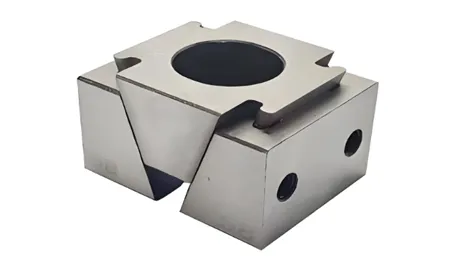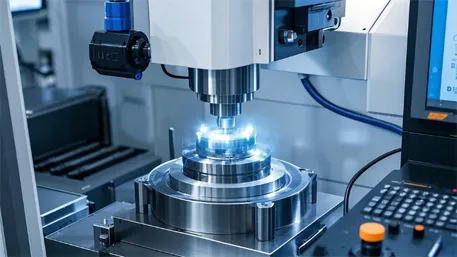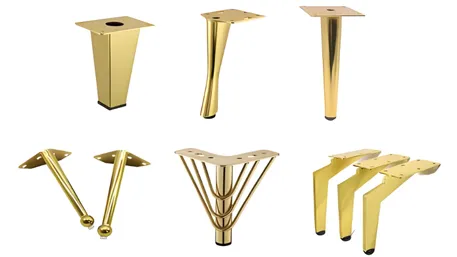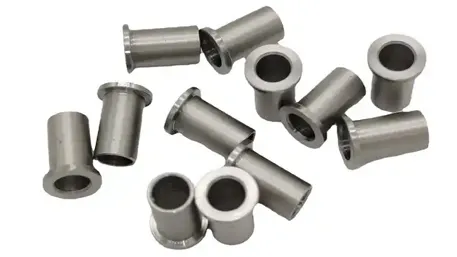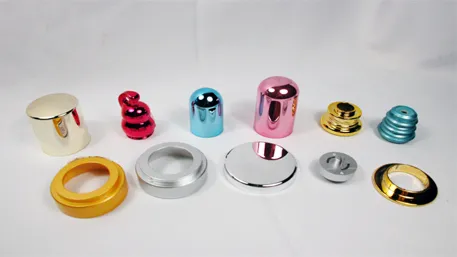In the field of drone manufacturing, the frame, as the core structure carrying the flight system, its lightweight design, strength, and precision directly affect the drone’s endurance, payload capacity, and flight stability. With the diversified and specialized development of drone applications, CNC (Computer Numerical Control) processing technology, with its excellent precision manufacturing capabilities and material adaptability, has become the core technical support for customizing high – performance drone frames. This article will systematically analyze the technical logic and engineering value of custom CNC drone frames from dimensions such as technical advantages, materials engineering, processing technology, quality control, and industry applications.
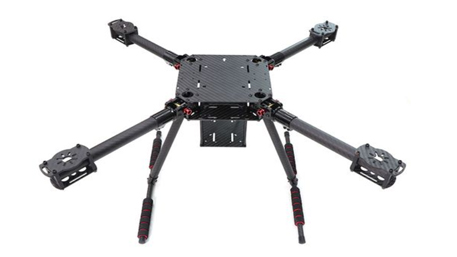
I. Core Advantages of CNC Technology in Drone Frame Customization
CNC technology provides three core supports for drone frame processing through digital control and multi – axis linkage capabilities:
Sub – millimeter – level Precision Assurance
The positioning accuracy of CNC machine tools can reach ±0.01mm, the repeat positioning accuracy is ±0.02mm, and the surface roughness Ra≤0.8μm. For example, when processing the mounting holes of a drone carbon fiber frame, the hole position tolerance can be controlled within ±0.01mm, ensuring the accuracy of component assembly and reducing flight vibration.
Full – dimensional Machining Capability for Complex Structures
Five – axis CNC equipment can achieve special – shaped structures, thin – wall designs (wall thickness ≤ 1mm), and lightweight hollowing processing that are difficult to complete with traditional processes. For example, the joint structure of a drone folding frame can be formed in one – time through five – axis milling, ensuring the flexibility and strength of the folding mechanism.
High Compatibility of Materials and Processes
CNC technology is compatible with various materials such as aluminum alloys (6061, 7075), carbon fiber composite materials (CFRP), titanium alloys (TC4), and engineering plastics (PEEK). For different material characteristics, cutting parameters can be optimized: when processing carbon fiber, a low – speed (500 – 800r/min) and high – feed (0.1 – 0.15mm/z) strategy is adopted to reduce fiber breakage; when processing aluminum alloy, through high – speed cutting (HSC) technology, the rotation speed is 15000r/min, and the feed rate is 2000mm/min, increasing the efficiency by 40%.
II. Materials Engineering and Selection Strategies for Custom Drone Frames
Material selection is a crucial link in drone frame customization and needs to be scientifically matched according to flight requirements and working conditions:
Balance of Lightweight and Strength
Carbon Fiber Composite Material: With a density of 1.6g/cm³ and a strength 3 times higher than that of aluminum alloy, it is used for high – end drone frames, reducing weight by 60% while maintaining a tensile strength of ≥1500MPa, suitable for aerial photography and racing drones.
Aluminum Alloy (6061 – T6): With a density of 2.7g/cm³ and a tensile strength of 290MPa, it has a relatively low cost and is suitable for the load – bearing frames of industrial – grade drones, achieving a balance between lightweight and cost.
Special Function Requirements
Titanium Alloy (TC4): With a tensile strength of ≥895MPa, a weight reduction of 40%, and excellent corrosion resistance, it is suitable for drone frames in harsh outdoor environments, such as agricultural spraying drones.
Engineering Plastic (PEEK): It can withstand high temperatures (250℃) and has impact resistance. It is used for the frames of small drones, combining lightweight and structural stability.
Optimization of Cost and Performance
Economical Solution: ABS plastic is processed by CNC injection molding, with a low cost, suitable for the basic frames of consumer – grade drones.
High – end Applications: Hybrid material frames (such as carbon fiber + titanium alloy) are precisely processed by CNC to achieve the optimal lightweight design under extreme performance requirements.
III. Analysis and Innovation of CNC Processing Technology
To meet the special requirements of drone frames, CNC processing technology achieves a double breakthrough in efficiency and quality through the following techniques:
Multi – axis Linkage Composite Processing
Five – axis milling can complete the complex surfaces and weight – reducing structures of drone frames, such as the streamlined contours of wings. It can be formed in one clamping, increasing the efficiency by 70% and with a surface roughness Ra≤0.8μm.
Four – axis processing enables multi – angle slotting and hole – position processing of the frame, such as the precise positioning holes of the battery compartment, with a position accuracy of ±0.02mm.
High – speed Cutting and Precision Molding
When processing aluminum alloy frames, high – speed cutting (HSC) technology reduces cutting heat deformation, ensuring the dimensional stability of thin – wall structures (wall thickness 1.5mm) and increasing the processing efficiency by 50%.
In the processing of carbon fiber frames, diamond tools and layer – by – layer milling processes are used to avoid material delamination and ensure structural strength.
Enhancement of Surface Treatment Processes
Aluminum alloy frames are anodized, with a film thickness of 10 – 20μm, improving corrosion resistance. They can pass a 500 – hour salt spray test without rusting and can be colored to meet appearance requirements.
The surface of carbon fiber frames is coated with epoxy resin to enhance wear resistance and UV resistance, extending the outdoor service life.
IV. Quality Control System for Custom Drone Frames
To ensure that products meet drone industry standards and flight safety, custom CNC drone frames need to go through a strict quality control process:
Inspection of Dimensions and Geometric Tolerances
A coordinate measuring machine (CMM) is used to detect key dimensions, such as the diagonal error of the frame ≤ 0.1mm.
Geometric tolerance inspection: Flatness ≤ 0.05mm/m, perpendicularity ≤ 0.03mm, ensuring the consistency of frame assembly.
Verification of Material and Mechanical Properties
Ultrasonic flaw detection is carried out on carbon fiber frames to detect internal delamination defects; aluminum alloy frames undergo tensile tests (such as the tensile strength of 6061 – T6 ≥ 290MPa) and hardness tests.
Material density testing ensures that the lightweight design meets the requirements, such as the density of carbon fiber frames being controlled at 1.6±0.1g/cm³.
Functional and Reliability Testing
Vibration Test: Simulating the flight vibration environment, the frame amplitude ≤ 0.1mm to ensure the installation stability of electronic equipment.
Load Test: The frame can bear 1.5 times the designed load without deformation, ensuring the safety of the drone’s load – carrying flight.
V. Industry Application Practices
Consumer – grade Drones
Custom carbon fiber frames reduce weight by 60%, and when equipped with high – definition cameras, the endurance time is extended by 25%, meeting the lightweight needs of aerial photography drones.
Aluminum alloy frames are milled and anodized by CNC, with a surface hardness of HV120 or above, improving drop – resistance, suitable for entry – level drones.
Industrial – grade Drones
6061 aluminum alloy frames with a load – bearing capacity of 10kg are used for the cargo transportation of logistics drones, and the structural strength meets the requirements of frequent take – off and landing.
TC4 titanium alloy frames have strong corrosion resistance and are suitable for surveying drones in coastal areas to resist salt – fog erosion.
Racing Drones
Carbon fiber frames are milled by five – axis CNC, with accurate aerodynamic shapes, reducing the drag coefficient by 15% and improving flight speed and flexibility.
Folding frames are precisely processed by CNC, with a folding mechanism life of more than 5000 times, facilitating carrying and storage.
VI. Frequently Asked Questions (FAQ)
What level of precision can custom CNC drone frames achieve?
CNC processing can achieve a dimensional tolerance of ±0.01mm and a repeat positioning accuracy of ±0.02mm, meeting the precise assembly requirements of drone components.
How to choose the suitable frame material?
It needs to be selected according to the use of the drone. Carbon fiber is chosen for aerial photography drones, aluminum alloy for industrial load – bearing drones, titanium alloy for harsh environments, and plastic for entry – level drones.
How long is the production cycle for custom drone frames?
The production cycle depends on the complexity of the frame and the material. Simple frames usually take 5 – 7 days, and complex carbon fiber frames may take 10 – 15 days. Urgent customization is supported.
Can CNC processing improve the aerodynamic performance of drones?
Yes, CNC technology can accurately process the streamlined structures and surface details of the frame, optimize the air flow path, reduce wind resistance, and improve flight efficiency.
What about the cost of custom drone frames?
The cost is affected by materials and processing complexity. Carbon fiber frames are relatively expensive but have significant lightweight performance; aluminum alloy frames are cost – effective and suitable for most application scenarios.
Consult Now to Get a Customized Solution!
Whether it is an aerial photography drone pursuing extreme lightweight or an industrial – grade drone requiring high load – bearing, our professional team will rely on the high – precision of CNC technology and the advantages of materials engineering to provide you with a full – process customization service from design, processing to inspection. Click to leave a message, and let us use a rigorous technical system and innovative process solutions to customize high – performance and high – reliability CNC frames for your drones, helping you unleash infinite possibilities in the sky!

